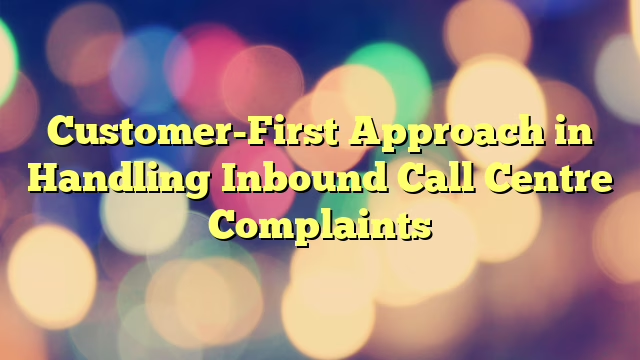Exploring the Complexities of the UK Healthcare Landscape
Identifying Key Stakeholders in the UK Healthcare System
The UK healthcare landscape is a multifaceted ecosystem comprising both public and private entities. At the heart of this system lies the National Health Service (NHS), which acts as the primary provider of health services, funded predominantly through taxation. The NHS delivers a vast array of healthcare services, ensuring care is free at the point of use. However, the role of private healthcare providers is increasingly significant, offering services that either complement or compete with those provided by the NHS. Additionally, regulatory bodies like the Care Quality Commission (CQC) are instrumental in maintaining quality standards, ensuring both NHS and private entities adhere to established guidelines. For anyone aiming to navigate and scale a healthcare business in the UK, understanding these key stakeholders is essential.
The interaction among these various entities creates a complex environment in which healthcare providers must adeptly navigate funding mechanisms, patient expectations, and regulatory frameworks. Funding allocations from the NHS often influence the availability of services, while private practices can address perceived gaps in NHS care, particularly in areas such as elective surgeries and specialist care. For enterprises looking to expand, recognising their place within this intricate tapestry is vital. This understanding facilitates strategic planning and positioning, ensuring that services are aligned with current market demands and needs.
Complying with the Regulatory Framework for Healthcare Businesses
Successfully navigating the regulatory landscape is paramount for both compliance and growth within the UK healthcare sector. The Health and Social Care Act is a key legislative framework that dictates how healthcare is delivered and funded in the UK. Adhering to this Act, alongside other relevant regulations such as the Care Act and the Mental Health Act, is essential for any healthcare organisation seeking to scale its operations responsibly and sustainably. Non-compliance can provoke severe penalties, including the potential revocation of a licence to operate.
Moreover, organisations must align with various standards set by the Care Quality Commission (CQC) and the General Medical Council (GMC), both of which oversee the quality of care and the professional conduct of healthcare practitioners. Grasping these regulations not only aids in compliance but also bolsters a healthcare provider’s reputation, enhancing patient trust and potentially increasing patient volumes. For businesses aspiring to scale, it is crucial to weave regulatory compliance into the operational strategy from the very beginning.
Identifying Market Trends and Growth Opportunities in UK Healthcare
The UK healthcare market is in a state of constant evolution, influenced by advancements in technology and changes in patient expectations. A prominent trend is the surge in telemedicine, which gained momentum during the COVID-19 pandemic, fundamentally altering how patients engage with healthcare services. This digital transformation offers a unique opportunity for healthcare businesses to broaden their reach and enhance service delivery by incorporating virtual consultations into their offerings. Additionally, there is an escalating demand for private care as patients seek expedited access to treatment and a more tailored experience.
Staying informed about these trends enables healthcare businesses to identify and capitalise on growth opportunities. For instance, the integration of telehealth services not only improves patient outcomes but also boosts operational efficiency by lessening the strain on physical facilities. Furthermore, with an ageing population, there is an increasing need for services specifically designed for elderly care. Adapting to these evolving market demands can favourably position healthcare businesses, enabling them to scale effectively while delivering much-needed services. Thus, a proactive approach to market research and trend analysis is crucial for any healthcare entity aspiring to succeed in this dynamic environment.
Implementing Strategies for Enhanced Operational Efficiency
Improving Administrative Processes for Better Healthcare Delivery
Streamlining administrative processes is crucial for minimising overheads and enhancing service delivery in the healthcare sector. Efficient administrative practices can significantly enrich patient experiences and boost operational output. The adoption of automation and digital tools can revolutionise administrative functions, allowing healthcare providers to concentrate more on patient care rather than on paperwork and administrative tasks. For instance, automating appointment scheduling, billing, and patient reminders can free up staff time and reduce errors, leading to a more seamless operational flow.
- Electronic Health Record (EHR) systems for patient management
- Automated billing and payment processing tools
- Appointment scheduling software
- Patient communication platforms for reminders and follow-ups
- Data analytics tools for performance monitoring
- Telehealth software for remote consultations
- Document management systems for streamlined record-keeping
- Workflow management tools to optimise staff allocation
By employing these essential tools for automation, healthcare businesses can markedly diminish human error and enhance both the responsiveness and quality of care delivered to patients. Furthermore, prioritising operational efficiency improves the overall profitability of a healthcare practice, thereby allowing for reinvestment in service enhancements and technological advancements, both of which are vital for scaling efforts.
Maximising Patient Flow and Care Delivery Efficiency
Effective management of patient flow lies at the core of operational efficiency within healthcare settings. Optimising patient flow not only enhances patient satisfaction but also reduces waiting times—both critical elements in the contemporary healthcare landscape. This entails comprehensive strategies encompassing scheduling, triage, and discharge planning, ensuring patients receive timely care while maximising resource utilisation.
Implementing robust scheduling systems can aid in efficiently managing patient appointments, avoiding bottlenecks, and ensuring staff are adequately prepared for peak times. Triage protocols can further streamline patient flow by prioritising cases based on urgency, thereby optimising the use of healthcare resources. Lastly, effective discharge planning is imperative; it not only boosts patient satisfaction but also guarantees that healthcare facilities can accommodate new patients promptly.
Investing in strategies that optimise patient flow can lead to significant enhancements in operational efficiency. The outcome is an increase in patient throughput without compromising service quality, which supports the scalability of healthcare services. Emphasising these factors cultivates a culture of excellence that resonates with both patients and staff, creating a positive feedback loop that encourages further growth.
Utilising Technology for Enhanced Operational Efficiency
Technology serves as a transformative catalyst within the healthcare sector, presenting opportunities for substantial improvements in operational efficiency. The integration of advanced technology, such as Electronic Health Records (EHR) systems and artificial intelligence (AI) diagnostics, can streamline workflows, improve data management, and enhance patient outcomes. For example, EHR systems enable real-time access to patient information, thereby reducing the time spent on administrative tasks and allowing healthcare professionals to devote more attention to patient care.
Moreover, artificial intelligence is increasingly being incorporated to aid in diagnostics and treatment planning. Machine learning algorithms can analyse vast datasets, identifying patterns that may elude human practitioners. This not only boosts diagnostic accuracy but can also tailor treatment plans to individual patients, thereby enhancing both efficiency and outcomes. Furthermore, telemedicine platforms empower healthcare providers to extend their reach without necessitating physical expansion, making it easier to scale services in response to growing demand.
Investing in the appropriate technology stack is critical for healthcare businesses seeking to elevate operational efficiency. Evaluating technology solutions based on their potential return on investment and their capability to integrate smoothly into existing processes is essential. By leveraging technology, healthcare providers can not only enhance operational efficiency but also enrich the overall patient experience, making it a vital component of any scaling strategy.
Prioritising Staff Training and Development for Enhanced Efficiency
The regular training and development of staff are crucial for enhancing operational efficiency and the quality of patient care. A well-trained workforce is not only more competent but also more confident in their ability to deliver exceptional care. Continuous education ensures that healthcare professionals are current with the latest practices, technologies, and regulatory requirements, which directly impacts overall operational efficiency.
Focusing on key areas such as clinical skills, patient communication, and technology utilisation can significantly enhance staff capabilities. For instance, training in clinical skills ensures that staff remain proficient in the latest medical techniques, while effective communication training can improve patient interactions, fostering trust and satisfaction. Additionally, training in the use of new technology is essential, particularly as the healthcare landscape continues to evolve rapidly.
- Clinical skills enhancement training
- Patient communication workshops
- Technology adoption sessions
- Leadership and management skills training
- Compliance and regulatory training
- Emergency response training
- Patient safety and quality assurance workshops
- Team-building exercises to enhance collaboration
By prioritising staff training and development, healthcare businesses can cultivate a culture of excellence that not only improves operational efficiency but also enhances patient care quality. Furthermore, this investment in human capital is vital for scaling; as staff members feel more capable and engaged, they are more likely to contribute positively to the organisation’s growth and sustainability.
Adopting Lean Management Principles for Enhanced Efficiency
Implementing lean management principles is fundamental for minimising waste and improving process efficiency within healthcare. By concentrating on value stream mapping, continuous improvement, and staff engagement, healthcare businesses can identify inefficiencies and streamline operations. The core principle of lean management is to maximise value for patients while minimising waste—this balance is crucial for any scaling effort.
Value stream mapping entails analysing the flow of materials and information to identify bottlenecks and waste within processes. This approach allows healthcare providers to visualise their operations and pinpoint areas for enhancement. Continuous improvement, known as kaizen, encourages a culture where staff at all levels feel empowered to propose changes that enhance processes and patient care.
Engaging staff in the lean process is essential, as they possess intimate knowledge of day-to-day operations and challenges. By fostering a collaborative environment that encourages idea generation, healthcare businesses can create a motivated workforce that actively participates in the improvement process. Therefore, implementing lean management principles not only boosts operational efficiency but also enriches the overall organisational culture, making it a powerful strategy for scaling.
Strategic Financial Management and Growth in Healthcare
Establishing Effective Budgeting and Cost Control Practices in Healthcare
Effective budgeting and cost control are vital for maintaining financial health within the healthcare sector. In an environment where profit margins are often tight, managing overheads, staffing costs, and investments in growth is paramount. Developing a comprehensive budgeting framework allows healthcare businesses to plan for future expenses while ensuring that current operations remain sustainable.
Regularly reviewing financial statements, including profit and loss reports, cash flow statements, and balance sheets, enables healthcare providers to identify areas of concern early on. By closely monitoring costs and comparing them against budget forecasts, organisations can make informed decisions about resource allocation and pinpoint opportunities for cost savings. Furthermore, leveraging technology for financial management can streamline these processes, facilitating easier tracking of expenses and measurement of performance against key financial indicators.
Effective budgeting encompasses not only immediate costs but also strategic planning for future investments in technology, staff training, and facility expansion. By adopting a proactive approach to financial management, healthcare businesses can position themselves favourably for growth. This financial foresight is essential for scaling operations, as it provides the necessary stability to reinvest in enhancements that ultimately lead to improved patient care and business expansion.
Securing Funding for Business Expansion in Healthcare
Gaining access to capital for expansion can present significant challenges for healthcare businesses; however, understanding the various funding options available can unlock opportunities for growth. A mixture of traditional and modern funding avenues exists, including loans, grants, and private investors, each with its unique advantages and considerations.
Loans from banks or financial institutions are common for healthcare businesses seeking to expand. These loans typically demand a solid business plan and a clear understanding of repayment capabilities. Grants provided by government bodies or charitable organisations can offer a non-repayable option, although these may come with specific eligibility criteria and conditions. Additionally, approaching private investors or venture capitalists can be advantageous, particularly for businesses that present innovative solutions or services aligning with market trends.
To secure funding effectively, healthcare businesses must present a compelling case that demonstrates their potential for growth and the positive impact of their services on patient care. This includes detailed financial projections, market analysis, and a clear outline of how the funds will be utilised. By developing a robust funding strategy, healthcare providers can establish the financial foundation necessary for scaling their operations and enhancing their service offerings.
Implementing Best Practices for Revenue Cycle Management
The revenue cycle serves as the lifeblood of any healthcare organisation. Optimising this cycle ensures financial stability and sustainability, impacting everything from cash flow to service delivery. Best practices in revenue cycle management include efficient billing processes, accurate coding, and effective collections strategies. Each of these components plays a crucial role in maximising revenue while minimising losses.
Streamlining billing processes is vital for reducing delays and errors. Implementing automated billing software can significantly enhance efficiency by ensuring that charges are applied accurately and submitted promptly. Accurate coding is equally important; improper coding can lead to claim denials, which delay revenue flow and escalate administrative costs. Ongoing training in coding practices is essential to equip staff with the knowledge needed to navigate the complexities of modern healthcare billing.
Moreover, effective collections strategies are vital for maintaining a healthy cash flow. This may involve regular follow-ups on outstanding payments and offering flexible payment options to patients. By implementing these best practices, healthcare businesses can optimise their revenue cycle, ensuring they have the financial resources necessary to invest in quality care and operational improvements—both of which are critical for successful scaling.
Strategic Financial Forecasting and Planning for Healthcare Growth
Accurate financial forecasting is a cornerstone of strategic planning and resource allocation within the healthcare sector. By anticipating future financial trends and preparing for various scenarios, healthcare businesses can make informed decisions that facilitate sustainable growth. This process involves analysing historical data, market trends, and potential changes in regulations or reimbursement models.
Effective forecasting requires a multi-faceted approach that considers both internal and external factors. Healthcare providers should evaluate their service utilisation rates, patient demographics, and seasonal impacts. Additionally, external elements such as policy changes or economic conditions can significantly influence patient demand and funding availability. By incorporating these variables into their forecasting models, organisations can develop more reliable predictions.
Ultimately, financial forecasting supports strategic decision-making. It enables healthcare businesses to allocate resources effectively, identify potential shortfalls before they escalate into critical issues, and prioritise investments that will drive efficiency and growth. This proactive financial planning approach is vital for scaling, empowering organisations to maintain control amidst the evolving healthcare landscape.
Investing in Technology for Enhanced Operational Efficiency
Investing in technology is crucial for improving operational efficiency and reducing costs within the healthcare sector. The right technological solutions can streamline processes, enhance patient care, and improve data management and analysis capabilities. Areas such as electronic health records (EHR), telehealth platforms, and data analytics tools represent key opportunities for investment.
Electronic Health Records systems facilitate seamless access to patient information, reducing administrative burdens while improving the quality of care provided. Telehealth platforms, in contrast, expand the reach of healthcare services, allowing practitioners to consult with patients remotely and manage their time efficiently. Data analytics tools enable healthcare providers to gain insights into patient outcomes, operational efficiency, and resource allocation, allowing for data-driven decision-making.
Moreover, investing in technology is not merely a one-time expenditure; it necessitates a continuous commitment to staff training and system upgrades. As technology continues to evolve, healthcare businesses must remain agile and adapt to new innovations that can further enhance operational efficiency. By prioritising technology investments, healthcare providers position themselves for long-term success and scalability in an increasingly competitive marketplace.
Insights from Experts on Scaling Efficiency in Healthcare Businesses
Examining Real-World Examples of Successful Scaling in the UK Healthcare Sector
Real-world examples of successful scaling in the UK healthcare sector provide invaluable insights into effective strategies for growth. A prominent case is that of Bupa, which has continually expanded its services to meet the increasing demand for private healthcare. By diversifying its offerings—from health insurance to private medical care—Bupa has established itself as a leader in the industry. They have successfully scaled operations by investing in technology, such as online health assessments, which improve patient access and streamline processes.
Another notable example is Spire Healthcare, which has expanded its network of private hospitals across the UK. Their commitment to high-quality care and exceptional patient experience has earned them a stellar reputation. Spire’s successful scaling is driven by strategic partnerships with the NHS for certain services, allowing them to increase their patient base whilst maintaining high standards of care. Their focus on staff training and development has also been essential, ensuring a skilled workforce capable of managing increased patient volumes and complexities.
- Bupa: Diversifying services to meet market demand
- Spire Healthcare: Strategic partnerships with the NHS
- London Medical: Embracing telehealth for efficient service delivery
- Practice Plus Group: Expanding urgent care services
These examples illustrate that scaling in the healthcare sector necessitates a multifaceted approach, encompassing technology adoption, strategic partnerships, and a steadfast commitment to quality care. By learning from these successful initiatives, other healthcare businesses can identify best practices and implement them effectively in their scaling strategies.
Implementing Actionable Steps for Efficiency Improvement
To implement efficiency measures in a healthcare business, a structured approach and unwavering commitment from leadership are essential. Actionable steps begin with conducting a thorough operational audit to pinpoint bottlenecks and areas ripe for improvement. Once these have been identified, businesses can prioritise initiatives based on their potential impact and feasibility. For instance, streamlining administrative processes through automation can yield immediate benefits.
Next, involving staff in the change process is crucial. By fostering a collaborative environment, staff members can offer valuable insights and suggestions for improvement. Regular training and workshops can help employees adapt to new processes and technologies, ensuring they are equipped to contribute positively to operational efficiency.
Furthermore, establishing clear metrics for success is vital. Key performance indicators (KPIs) should be set to monitor progress and make necessary adjustments. These metrics can include patient wait times, staff productivity levels, and financial performance indicators. By continuously reviewing these KPIs, healthcare businesses can remain agile and responsive to changing demands, ensuring that efficiency measures are not only implemented but sustained over the long term.
Assessing the Role of Leadership in Scaling Healthcare Efficiency
Leadership plays an integral role in the successful scaling of healthcare businesses. Effective leaders cultivate a culture of innovation and accountability, empowering teams to drive change and adopt new methodologies. Among the critical qualities of successful healthcare leaders is their ability to articulate a clear vision for the future, uniting staff around common objectives and inspiring them to pursue excellence in patient care.
Moreover, leaders within healthcare must exhibit adaptability and a readiness to embrace change. The rapid evolution of technology and shifting patient expectations require a forward-thinking approach that anticipates future challenges and opportunities. Successful leaders prioritise staff engagement and development, recognising that a motivated workforce is essential for addressing the needs of a growing patient base.
Importantly, leaders should also focus on cultivating strong relationships with stakeholders, including patients, staff, and external partners. By fostering trust and collaboration, healthcare leaders can facilitate smoother scaling processes and promote a shared commitment to quality care. In summary, the role of leadership is crucial in establishing the direction for scaling healthcare businesses and ensuring that operational efficiencies are realised.
What Impact Does Staff Training Have on Efficiency?
What Key Areas Should Staff Training Focus on in Healthcare?
Staff training is fundamental for enhancing efficiency and ensuring superior patient care within healthcare environments. Key areas for training should concentrate on improving clinical skills, enhancing patient communication, and effectively utilising technology. By addressing these focal points, healthcare organisations can significantly elevate their operational efficiency.
Training in clinical skills ensures that healthcare professionals are well-equipped with the latest medical knowledge and techniques. This is particularly vital in an ever-evolving field, where new treatments and procedures emerge regularly. Additionally, patient communication training is essential; effective communication can enrich patient satisfaction and adherence to treatment plans. Furthermore, staff must be proficient in technology use, especially given the growing reliance on electronic health records and telemedicine platforms.
- Clinical skills enhancement
- Patient communication workshops
- Technology utilisation training
- Compliance and regulatory training
- Emergency response protocols
- Cultural competency training
- Time management and organisational skills
- Team collaboration techniques
By concentrating on these vital training areas, healthcare businesses can cultivate a knowledgeable and skilled workforce that drives efficiency and quality improvements. Regular training not only enhances individual capabilities but also fosters a culture of continuous learning, which is critical for the sustained growth and scalability of healthcare operations.
How Can Ongoing Education Enhance Operational Efficiency?
Ongoing education significantly contributes to ensuring healthcare staff remain informed about the latest best practices, technologies, and industry regulations. By providing continuous learning opportunities, healthcare organisations can enhance staff skills and knowledge, which directly influences operational efficiency. As medical knowledge evolves rapidly, regular training ensures that staff are well-prepared to deliver care that meets current standards.
Incorporating ongoing education into workplace culture nurtures a sense of commitment to excellence among staff. It promotes continuous self-improvement and adaptability, which are essential in a dynamic environment. Moreover, as employees become more knowledgeable about new technologies and processes, they tend to work more efficiently, reducing errors and improving patient care outcomes.
Additionally, ongoing education can lead to higher employee satisfaction and retention rates. When staff feel valued and invested in through educational opportunities, they are more likely to be engaged and motivated. This positive work atmosphere contributes to overall operational efficiency, as motivated staff tend to be more productive and dedicated to delivering high-quality care.
What Influence Does Staff Morale Have on Efficiency?
Staff morale is a critical factor impacting operational efficiency within healthcare organisations. High morale typically translates into increased productivity, enhanced patient interactions, and a more cohesive team environment. When employees feel valued and appreciated, they are more inclined to exceed expectations in their roles, resulting in higher quality care and improved patient outcomes.
A positive work environment can be fostered through recognition programs, opportunities for career advancement, and open communication channels. Acknowledging staff achievements cultivates a culture of appreciation, motivating employees to perform at their best. Furthermore, involving staff in decision-making processes enhances their sense of ownership and commitment to the organisation’s objectives.
Research indicates that organisations with high staff morale experience lower turnover rates, which is particularly important in healthcare, where continuity of care is essential. As teams stabilise, they can build stronger relationships with patients, leading to enhanced patient satisfaction and loyalty. Therefore, prioritising staff morale not only improves operational efficiency but also contributes to a more resilient and effective workforce.
Strategic Marketing and Branding for Healthcare Growth
Creating a Distinctive Healthcare Brand
A robust brand is vital for differentiating a healthcare business in an increasingly competitive market. Developing a healthcare brand involves crafting a clear branding strategy that reflects the organisation’s values, mission, and unique selling propositions. This process encompasses messaging, visual identity, and the overall patient experience.
Healthcare providers must ensure that their branding resonates with patients and effectively communicates their commitment to quality care. This includes creating a professional logo, a user-friendly website, and consistent messaging across all platforms. Additionally, leveraging patient testimonials and success stories can significantly enhance brand credibility and trustworthiness.
Brand development should also extend to community engagement initiatives, establishing a solid presence in local areas. Participating in health fairs, sponsoring community events, and offering educational seminars can strengthen relationships with potential patients and foster brand loyalty. Ultimately, a well-defined brand can position healthcare businesses for growth, ensuring they stand out in a crowded marketplace.
Executing Effective Marketing Strategies in Healthcare
Implementing effective marketing strategies is crucial for driving growth within healthcare businesses. Digital marketing, particularly through social media and search engine optimisation (SEO), can significantly enhance visibility and attract new patients. Developing a robust online presence allows healthcare providers to engage with potential patients, share valuable information, and showcase their services.
Content marketing serves as another effective strategy, offering valuable insights and information that resonate with patients. By producing blogs, articles, and videos on relevant healthcare topics, organisations can establish themselves as thought leaders in the field. This approach not only builds trust but also positions the business as a go-to resource for health-related queries.
Moreover, community outreach efforts can expand a healthcare organisation’s reach. Hosting events, providing free health screenings, or collaborating with local organisations can generate goodwill and enhance brand awareness. By focusing on patient-centric marketing strategies, healthcare businesses can effectively connect with their target audiences, ultimately driving growth and enhancing patient loyalty.
What Advantages Does Patient-Centric Marketing Offer?
Patient-centric marketing prioritises the needs and experiences of patients, resulting in increased loyalty and referrals. By placing patient needs at the forefront of marketing strategies, healthcare providers can forge more meaningful connections with their audiences. This approach allows organisations to tailor their messaging and services to better align with patient expectations and preferences.
One of the primary benefits of patient-centric marketing is its capacity to enhance patient satisfaction. When patients feel understood and valued, they are more likely to engage with the healthcare provider and recommend them to others. Additionally, this approach fosters trust and transparency, both of which are critical components in healthcare relationships.
Furthermore, patient-centric marketing can yield valuable insights into patient behaviour and preferences. By collecting feedback through surveys and interactions, healthcare businesses can refine their services and marketing strategies to better cater to patient needs. Ultimately, adopting a patient-centric approach can lead to improved patient outcomes, increased referrals, and a stronger reputation within the community.
Empirical Benefits of Scaling Your Healthcare Business for Efficiency
How Does Scaling Impact Patient Outcomes?
Scaling a healthcare business can lead to enhanced patient outcomes through improved processes, technology, and resource allocation. As healthcare organisations grow, they often have the opportunity to invest in advanced technologies and staff training that directly influence care quality. For instance, larger healthcare entities can implement standardised protocols and best practices across their facilities, resulting in more consistent patient care.
Moreover, scaling enables healthcare providers to expand their service offerings, accommodating a broader range of patient needs. With increased capacity, organisations can reduce patient wait times, ensuring timely access to care, which is critical for effective treatment. Additionally, the integration of data analytics tools allows for improved monitoring of patient outcomes, enabling organisations to continually refine their practices.
Research supports the idea that larger healthcare organisations often achieve superior outcomes due to the resources available for continuous improvement initiatives. By scaling effectively, healthcare businesses can enhance their operational efficiency while significantly improving the quality of care provided to patients.
What Financial Advantages Does Scaling Provide?
Scaling offers numerous financial benefits for healthcare organisations, including economies of scale, increased revenue, and improved financial stability. As organisations grow, they can often lower per-unit costs through bulk purchasing, streamlined operations, and enhanced negotiation power with suppliers. This reduction in costs can lead to improved profit margins, facilitating reinvestment in quality improvements and growth initiatives.
Furthermore, larger healthcare entities can tap into a broader patient base, translating into greater revenue opportunities. By diversifying service offerings and expanding geographic reach, organisations can attract more patients, thereby driving higher revenues. Additionally, a solid financial foundation enables better cash flow management, allowing organisations to navigate economic fluctuations and invest in future growth more effectively.
In summary, scaling not only enhances operational efficiency but also significantly contributes to the financial health of healthcare organisations. This financial robustness is critical for sustaining long-term growth and ensuring the delivery of high-quality care.
Expert Analysis on the Quality Impact of Scaling in Healthcare
Scaling can profoundly influence healthcare quality, often leading to improved patient outcomes and enhanced service delivery. Expert analysis indicates that as healthcare organisations expand, they typically gain access to superior resources, including advanced technology and specialised staff, which can elevate care standards.
Moreover, larger healthcare entities can invest in comprehensive training and development initiatives, ensuring that staff are equipped with the latest knowledge and skills. This focus on continuous improvement is vital for maintaining high-quality care standards as organisations grow. Research shows that organisations prioritising quality during scaling often experience significant benefits in patient satisfaction and health outcomes.
Additionally, scaling allows for the implementation of standardised practices across multiple facilities, ensuring consistency in care delivery. Such standardisation can help mitigate variability in patient experiences, leading to improved overall healthcare quality. Thus, when executed thoughtfully, scaling can serve as a catalyst for enhancing both operational efficiency and the quality of care in the healthcare sector.
Establishing Partnerships and Networks in Healthcare
Identifying Potential Collaborators in the UK Healthcare Sector
Strategic partnerships can accelerate growth for healthcare businesses, making it essential to identify potential collaborators within the UK healthcare sector. Collaborating with other healthcare providers, technology firms, and educational institutions can create synergies that enhance service offerings and operational efficiency. Understanding the value proposition of potential partners is vital; this involves assessing how their services or capabilities align with your business objectives.
Potential partners may include NHS organisations, private healthcare providers, research institutions, and technology companies specialising in healthcare solutions. Each partnership should be evaluated based on shared objectives, complementary expertise, and mutual benefits. Collaborating with NHS organisations, for instance, can enhance credibility and open doors to new patient populations.
Furthermore, engaging with local universities or training providers can create pathways for staff development and research collaboration, further strengthening your organisation’s capabilities. By strategically identifying and nurturing these partnerships, healthcare businesses can establish a robust network that supports scaling while enhancing service delivery to patients.
How Can Networking Enhance Business Opportunities?
Networking plays a pivotal role in enhancing business opportunities within the healthcare sector. By building connections with other healthcare professionals, organisations can access new markets, resources, and expertise. Networking often leads to collaborative initiatives that drive innovation, improve patient care, and generate new revenue streams.
Participating in industry conferences, seminars, and workshops offers invaluable opportunities for healthcare providers to engage with peers, share knowledge, and explore potential collaborations. Networking can also facilitate knowledge exchange, allowing organisations to learn from others’ experiences and adapt best practices that align with their growth objectives.
Moreover, networks can provide access to funding opportunities, as investors and grant providers often seek established connections within the healthcare community. By leveraging these networks, healthcare businesses can enhance their visibility, credibility, and ultimately, their growth potential. Therefore, fostering strong professional relationships is not merely beneficial but essential for achieving scaling success in the healthcare sector.
Best Practices for Collaborating with Other Healthcare Providers
Effective collaboration between healthcare providers is crucial for achieving shared objectives and enhancing patient care. Best practices for successful collaboration include establishing clear communication channels, aligning on shared goals, and fostering mutual respect among partners. Clear communication is key to ensuring that all parties remain aligned and work toward common objectives, minimising misunderstandings and enhancing collaboration effectiveness.
Developing joint protocols and care pathways can streamline processes, ensuring that patients receive consistent high-quality care across different providers. Regular meetings and check-ins help maintain alignment and address challenges as they arise. It is equally important to celebrate successes and acknowledge contributions from all collaborators, fostering a positive working relationship and encouraging ongoing partnership.
Furthermore, leveraging each partner’s strengths can enhance the quality of care delivered. For example, if one provider excels in a particular area, they can lead initiatives in that domain, allowing others to learn and adapt. By focusing on best practices for collaboration, healthcare providers can forge synergistic relationships that drive efficiency and improve patient outcomes, paving the way for scaling in the healthcare sector.
Frequently Asked Questions
What Are the Core Advantages of Scaling a Healthcare Business?
Scaling a healthcare business can result in improved patient outcomes, enhanced operational efficiency, and increased revenue. It facilitates better resource allocation, broader service offerings, and the ability to invest in technology and staff development.
How Does Technology Enhance Healthcare Efficiency?
Technology streamlines administrative tasks, enhances data management, and improves patient care through tools like EHR systems and telehealth platforms. This advancement leads to greater operational efficiency and heightened patient satisfaction.
What Role Does Staff Training Play in Healthcare?
Staff training ensures that healthcare professionals possess the latest skills and knowledge, improving patient care quality and operational efficiency. Regular training contributes to a knowledgeable and adaptable workforce.
How Can Partnerships Facilitate Scalability in Healthcare?
Strategic partnerships can provide access to new markets, resources, and expertise, driving growth and enhancing service delivery. Collaborating with other providers can lead to shared best practices and innovations.
What Challenges Are Associated with Scaling a Healthcare Business?
Challenges include navigating regulatory requirements, securing funding for expansion, maintaining quality during growth, and managing increased operational complexities while ensuring patient care remains a priority.
How Important Is Branding for Healthcare Organisations?
A strong brand differentiates healthcare organisations in a competitive market, builds patient trust, and enhances credibility. It conveys mission and values, making it vital for attracting and retaining patients.
What Strategies Can Improve Patient Flow in Healthcare Settings?
Improving patient flow involves optimising scheduling systems, implementing triage protocols, and enhancing discharge planning. These strategies help reduce wait times and improve patient satisfaction.
How Can Healthcare Organisations Ensure Financial Stability During Scaling?
Healthcare organisations can ensure financial stability by implementing effective budgeting practices, optimising revenue cycles, securing diverse funding sources, and strategically investing in growth initiatives.
Why Is Ongoing Education Crucial in Healthcare?
Ongoing education keeps healthcare staff updated on best practices, technologies, and regulations. It enhances skills, improves patient care, and fosters a culture of continuous improvement within the organisation.
What Is the Impact of Staff Morale on Healthcare Efficiency?
High staff morale leads to increased productivity, improved patient interactions, and lower turnover rates. A positive work environment fosters commitment and engagement, contributing to overall operational efficiency.
The post Scaling Your Healthcare Business Efficiently in the UK appeared first on Healthcare Marketing Service.




















































